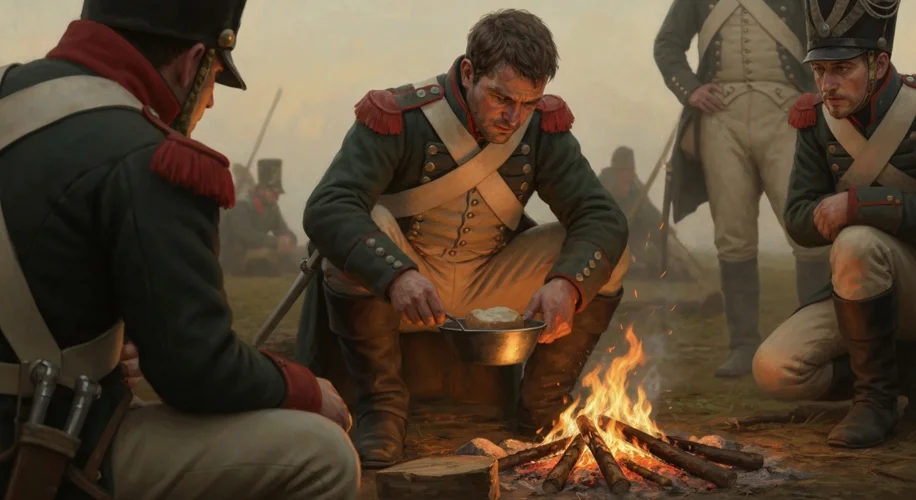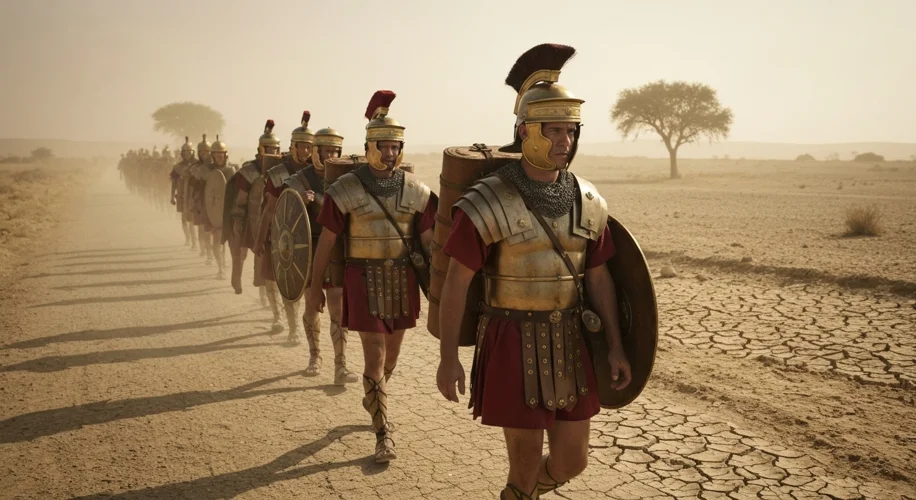The image of a soldier hunched over a meager, individual meal is a potent one, often conjuring thoughts of hardship and isolation. But what if this seemingly stark reality was, in fact, a deliberate and more practical choice for armies throughout history, rather than the communal kitchens we might expect?
For much of history, the notion of a grand, organized mess hall feeding every soldier was a logistical impossibility. Imagine the sheer scale of preparing and serving hot meals for tens of thousands, even hundreds of thousands, of men on the move. The infrastructure required—immense kitchens, vast quantities of fuel, hundreds of cooks, and meticulous distribution chains—was simply beyond the capabilities of most pre-modern armies.
Instead, the norm was the individual ration. This wasn’t just about a lack of facilities; it was a sophisticated response to the realities of campaigning. Think of a Roman legionary, marching under the scorching Mediterranean sun. His cibus (food) might consist of panis militaris (hard biscuit), cheese, dried fruit, and perhaps some salted meat or lentils. These were sturdy, non-perishable items that he carried himself in his sarcina (knapsack).

Why this emphasis on individual provision? Several critical factors came into play. Firstly, mobility and flexibility. An army that relies on communal kitchens is tethered to its supply depots and cooks. If a force needed to make a rapid advance, conduct a flanking maneuver, or was cut off from its main body, a communal system would quickly break down. Individual rations allowed soldiers to carry their sustenance with them, enabling dispersed movements and quick reactions on the battlefield. A soldier could eat when and where he was able, whether that was a quick bite before a charge or a cold meal under the stars after a long march.
Secondly, control and accountability. Distributing raw ingredients or pre-portioned rations to each soldier, or to small units, made it easier to track supplies and prevent wastage or pilferage. If a commander knew exactly how many days’ worth of rations each man carried, he had a much clearer picture of his army’s endurance. Communal kitchens, on the other hand, presented more opportunities for corruption, spoilage, and uneven distribution.
Consider the Napoleonic Wars. While Napoleon was a master strategist, his armies often struggled with logistics. The French system frequently involved soldiers foraging for themselves, supplemented by government-issued rations. This subsistance system, where soldiers were expected to supplement their basic issue, highlights the decentralized nature of feeding. A soldier might be issued flour, salt, and pork, and then be responsible for baking his bread or cooking his meal, often in small, ad-hoc groups.

The British Army in India during the Victorian era provides another example. While larger garrisons might have had more organized messes, for field operations, soldiers were often issued rations in kind or given a daily allowance (batta) to purchase their own food. This could include rice, lentils, ghee, and spices, which they would prepare themselves or with their messmates. The diversity of available local produce meant that the individual soldier often had more agency in his diet, though this also meant variations in quality and nutritional intake.
Furthermore, health and discipline played a role. While the idea of communal kitchens might seem more sanitary, poorly managed ones could become breeding grounds for disease. Individual preparation, while potentially less varied, could be managed at a smaller, more controlled level by the soldier himself. Moreover, the very act of managing one’s own sustenance fostered a sense of responsibility and self-reliance, qualities highly valued in military discipline.
By the 20th century, with advances in logistics, refrigeration, and transportation, large-scale communal kitchens became more feasible, especially in static bases or during prolonged sieges. However, the concept of the individual ration, evolving into packaged Meals, Ready-to-Eat (MREs), continued to be crucial for troops operating independently or in forward areas. The fundamental principle remained: ensuring soldiers could be fed, reliably and flexibly, wherever the mission took them.
So, the next time you picture an army on the march, remember that the seemingly simple act of a soldier carrying his own food was often a testament to military ingenuity, a pragmatic solution born from centuries of hard-won experience on the battlefield.

